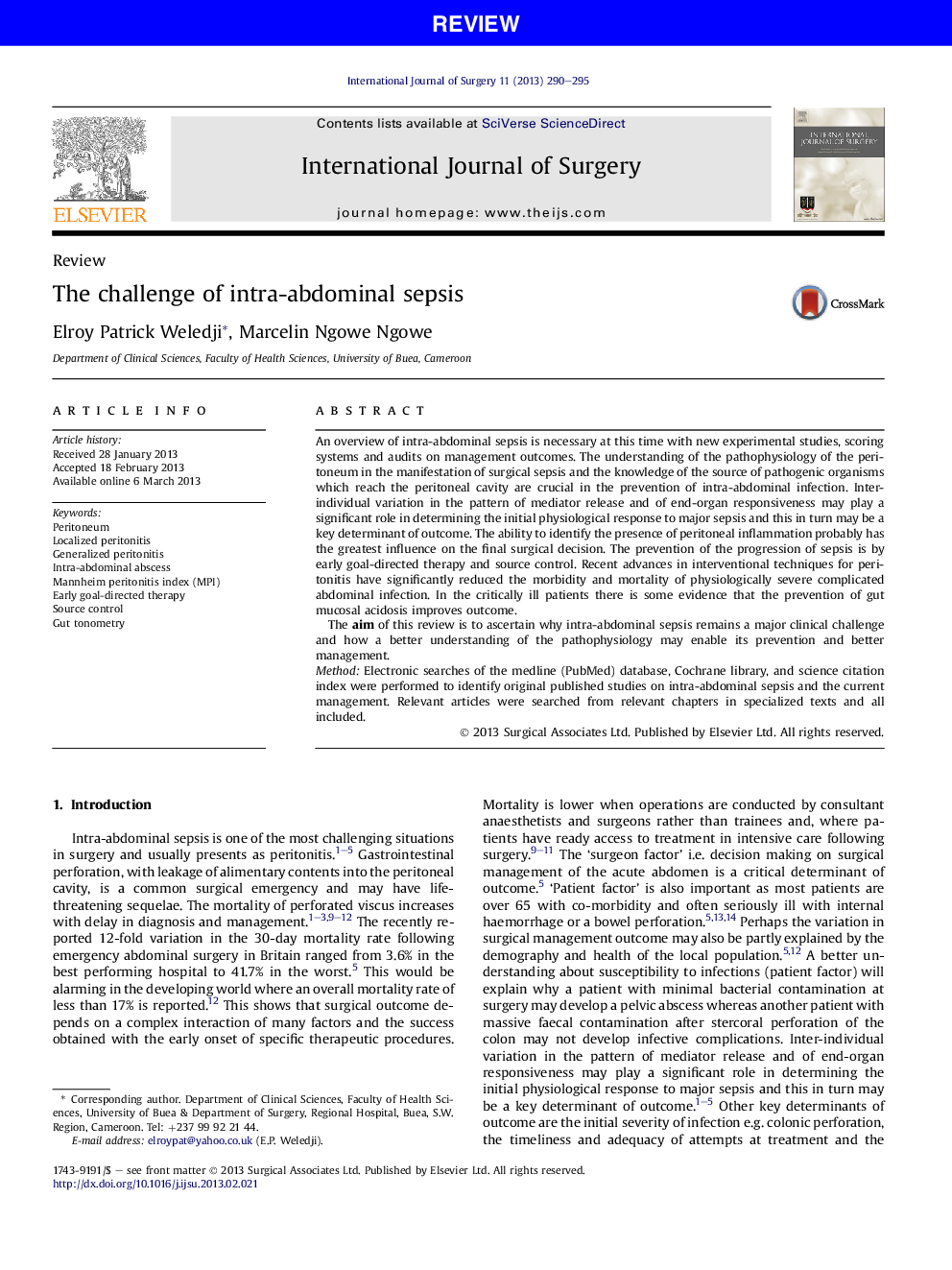| Article ID | Journal | Published Year | Pages | File Type |
|---|---|---|---|---|
| 4286333 | International Journal of Surgery | 2013 | 6 Pages |
An overview of intra-abdominal sepsis is necessary at this time with new experimental studies, scoring systems and audits on management outcomes. The understanding of the pathophysiology of the peritoneum in the manifestation of surgical sepsis and the knowledge of the source of pathogenic organisms which reach the peritoneal cavity are crucial in the prevention of intra-abdominal infection. Inter-individual variation in the pattern of mediator release and of end-organ responsiveness may play a significant role in determining the initial physiological response to major sepsis and this in turn may be a key determinant of outcome. The ability to identify the presence of peritoneal inflammation probably has the greatest influence on the final surgical decision. The prevention of the progression of sepsis is by early goal-directed therapy and source control. Recent advances in interventional techniques for peritonitis have significantly reduced the morbidity and mortality of physiologically severe complicated abdominal infection. In the critically ill patients there is some evidence that the prevention of gut mucosal acidosis improves outcome.The aim of this review is to ascertain why intra-abdominal sepsis remains a major clinical challenge and how a better understanding of the pathophysiology may enable its prevention and better management.MethodElectronic searches of the medline (PubMed) database, Cochrane library, and science citation index were performed to identify original published studies on intra-abdominal sepsis and the current management. Relevant articles were searched from relevant chapters in specialized texts and all included.
